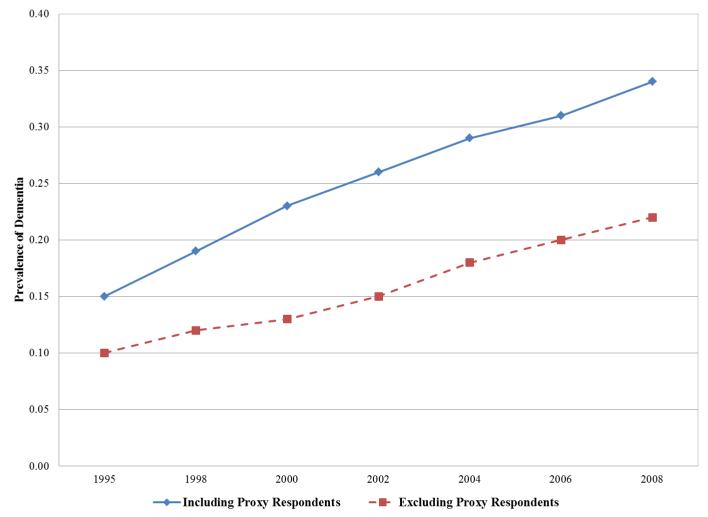Figure 2.
Trajectories of cognitive change in the HRS 1995 cohort (n=5,483), contrasting estimates of dementia probability scores (2a) and memory functioning (2b) with (solid line) and without (dashed line) proxy respondents. Scores were calculated by applying the regression coefficients shown in Table 1 (noting that age is centered at 70 and white women comprise the reference category in Table 1) to derive a predicted odds of dementia or composite memory score for each individual in the weighted sample in each year, based on that individual’s characteristics and test scores in the core interview. For example, a 70 year old white woman who did not complete a direct assessment but had an IQCODE score of 4 and a proxy memory score of 5 would have predicted odds of dementia of (noting the recentering of the variables): odds=exp(4.608+1.889 + 2.220*(4−5) + 1.274*(5−5)) = 72.02; probability=65.62/(1 + 65.62) = .99 By comparison, a 70 year old white woman who completed the direct assessment and had an immediate word recall score of 7, a delayed recall score of 5 and a TICS of 11 would have a predicted odds of dementia score of: odds=exp(4.608 + 1.889*1 + .933*7 − .266*7*7 − .797*5 − 1.075*11 + .043*11*11) < .001; probability = .001 Models are based on non-Hispanic participants in the 1995 Core HRS interview, sample weighted to be representative of the non-institutionalized US population born 1923 or earlier (average age 79 at baseline). By 2008, 1,418 individuals remained in the sample.


